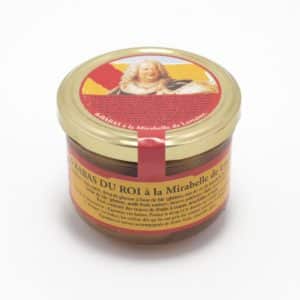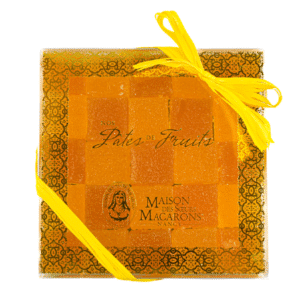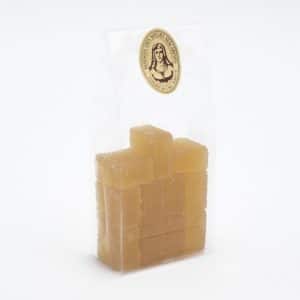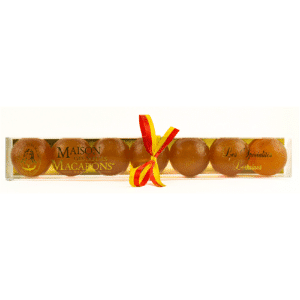
History of Mirabelle
Mirabelle is the fruit of the Mirabellier tree, a variety of plum tree, hence its nickname “little plum”. Derived from the Latin “mirabilis” which means “beautiful to see” its golden color makes the orchards delicious in summer.
Juicy and sweet, it has many benefits.
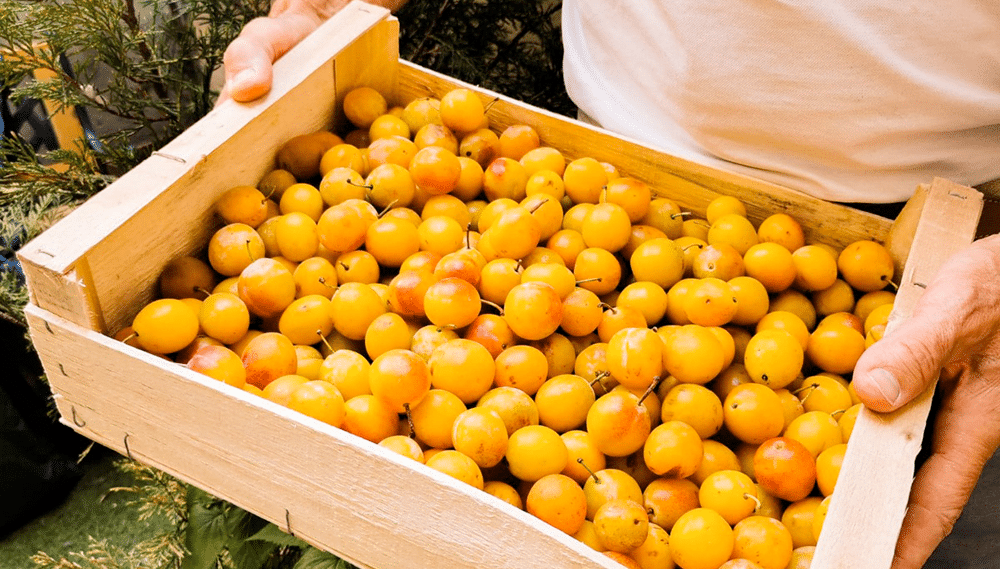
History of Mirabelle
Eagerly awaited every year, Mirabelle, the golden fruit of Lorraine, has been enjoyed every summer since the 15th century.
It was at this time that Duke René I, returning from the crusade with a few plum plums, established his orchards around Metz.
The clayey soils and temperatures of Lorraine allow this fruit to flourish fully. In fact, the clay soils are filled with rain in winter and spring and then redistribute this water to the Mirabelles in the summer. Maximum temperatures in summer rarely exceed 25°C and the nights are cool, which allows the Mirabelle to develop in optimal conditions. This variable climate is the perfect combination which gives Mirabelle its light fragrance, its thin skin and its pulp which is both juicy and sweet.
Long abandoned, the Mirabelliers are today part of Lorraine’s cultural heritage.
Perles de Lorraine, our house specialty
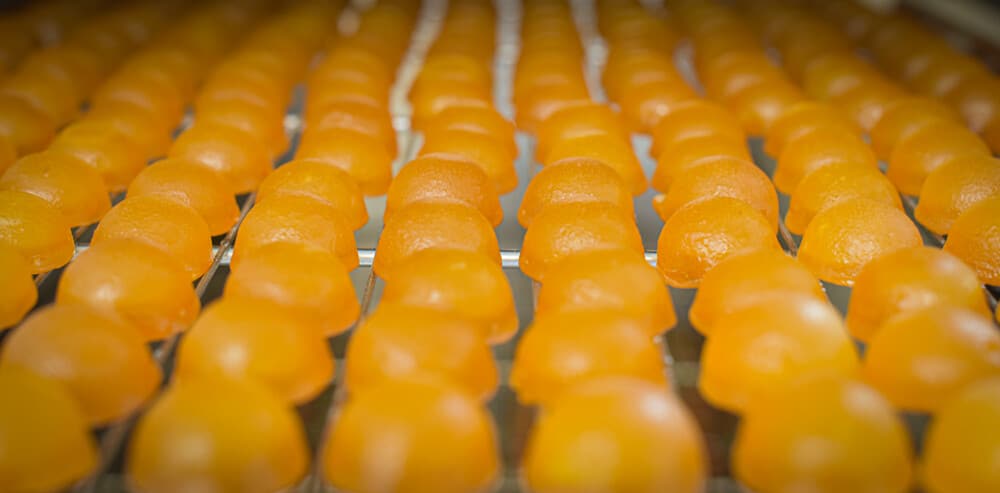
Indeed, from the beginning of the 21st century, a phylloxera epidemic severely affected all Lorraine vineyards. Added to this is the First World War, which had a considerable impact on the region. The farmers then decided to plant plum trees instead of the vines. The orchards expanded spectacularly until the Second World War, which slowed down this growth. No longer producing any fruit, in 1988 two hundred young producers mobilized to plant 5,000 hectares with the aim of relaunching both the production and consumption of this delicious delicacy.
Less than 10 years later, the bet has paid off. The plantations are flowering and bringing fresh fruit again.
The “Mirabelles de Lorraine” appellation is regulated. In 1996 the Mirabelle de Lorraine obtained the IGP label: Protected Geographical Indication, a guarantee of quality which made it the first labeled French fruit. This label guarantees the protection of the name “Mirabelles de Lorraine” at European level, as well as the origin of the fruit and all its traditional know-how.
In 1999, the Label Rouge was obtained, which is the official guarantee of superior quality. Issued by the Ministry of Agriculture, it guarantees traceability tests at all levels and is regularly checked.
The production of Mirabelle
Lorraine is the region that produces the most Mirabelles, it alone represents 80% of world production in 2020.
There are several varieties of Mirabelles:
- The Mirabelle de Lorraine which is the subject of a protected geographical indication;
- Nancy’s Mirabelle;
- The Mirabelle of Metz.
For the proper development of these fruit trees, they must all be spaced 8 to 10 meters apart. It is then possible to plant 200 trees per hectare. In Lorraine, 1000 hectares are dedicated to the exploitation of the Mirabellier tree.
The mirabelle plum season is very short. It is in April that flowering begins and the first flowers appear, leaving the trees to take on a white color, which will become more and more close to the yellow/gold color when the fruit reaches maturity, around from August until the end of September.
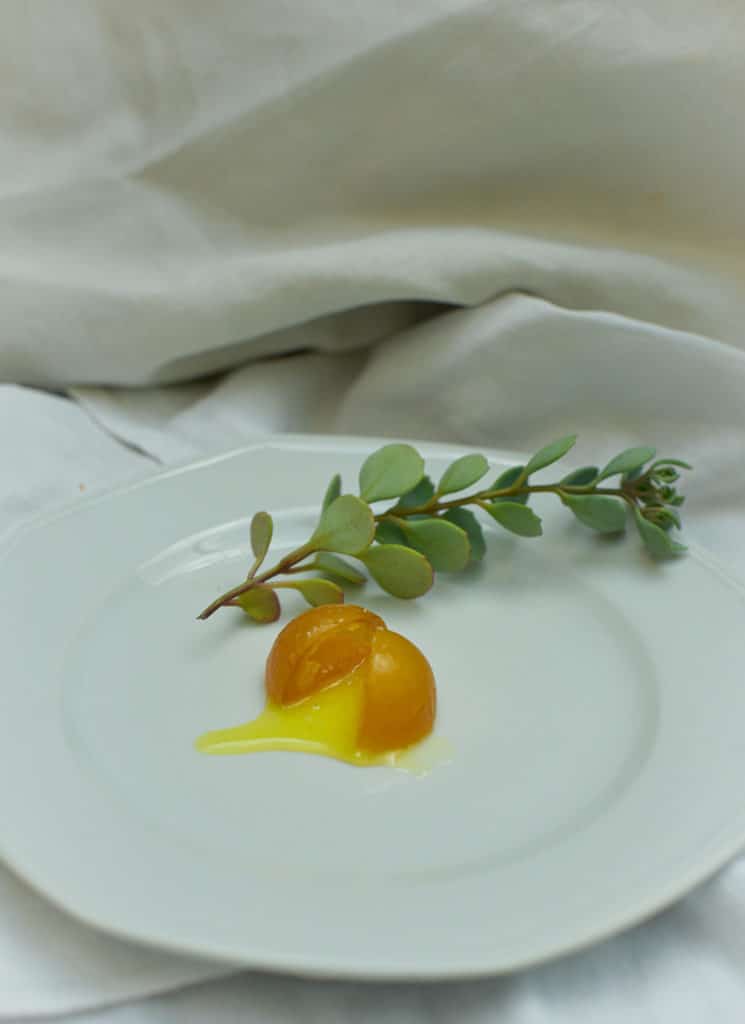
Consumption of Mirabelle
Mirabelle plums are always picked “ripe”. Their skin should be thin and tight. It may be covered with small red spots, this is the sign of a ripe harvest, of a tasty and juicy fruit.
Harvesting is generally done by hand, but there is a second way to proceed: the technique called “fruit shaking” consists of shaking the branches of the tree to make the ripe fruits fall.
The mirabelle plum is eaten ripe with juicy and sweet flesh. Cut in half, its core should come off easily.
After picking, these small, delicious local fruits can be consumed in several forms: fresh fruit, jam, tart, compote, syrup, liqueur, brandy, etc. Low in calories and tasty, this delicately flavored fruit is full of vitamins C and vitamins E which are powerful antioxidants ensuring the protection of our body’s cells. This fruit is also rich in good carbohydrates, water and fiber.
Mirabelle can be found on the shelves of many producers and traders to please you during the summer festivities.
In your sweet or savory recipes, Mirabelle will always be a flavor enhancer. This little fruit should be enjoyed without moderation by gourmands for a moment of freshness.
Very delicate, Mirabelle plums should be consumed quickly after purchase. It will keep for between 3 and 5 days in the vegetable drawer of the refrigerator.
Easy recipe cake
Clafoutis Mirabelle plums and flaked French almonds for 4 people.
Ingredients :
- 1 large glass of milk
- 3 tablespoons of flour
- 3 tablespoons of sugar
- 2 eggs
- 350 grams of Mirabelle plums in mumps
- 50 grams of flaked French almonds
In a salad bowl, mix the milk, flour and sugar. In a second salad bowl, mix the eggs.
Incorporate the eggs into your first preparation. Then add the Mirabelle plums.
Place everything in an oven dish and let your clafoutis cook for 45 minutes at 180°C.
Sprinkle the flaked almonds on top of your clafoutis 5 minutes before the end of cooking.
Reserve your pastry in the refrigerator until snack or dessert time, enjoy!
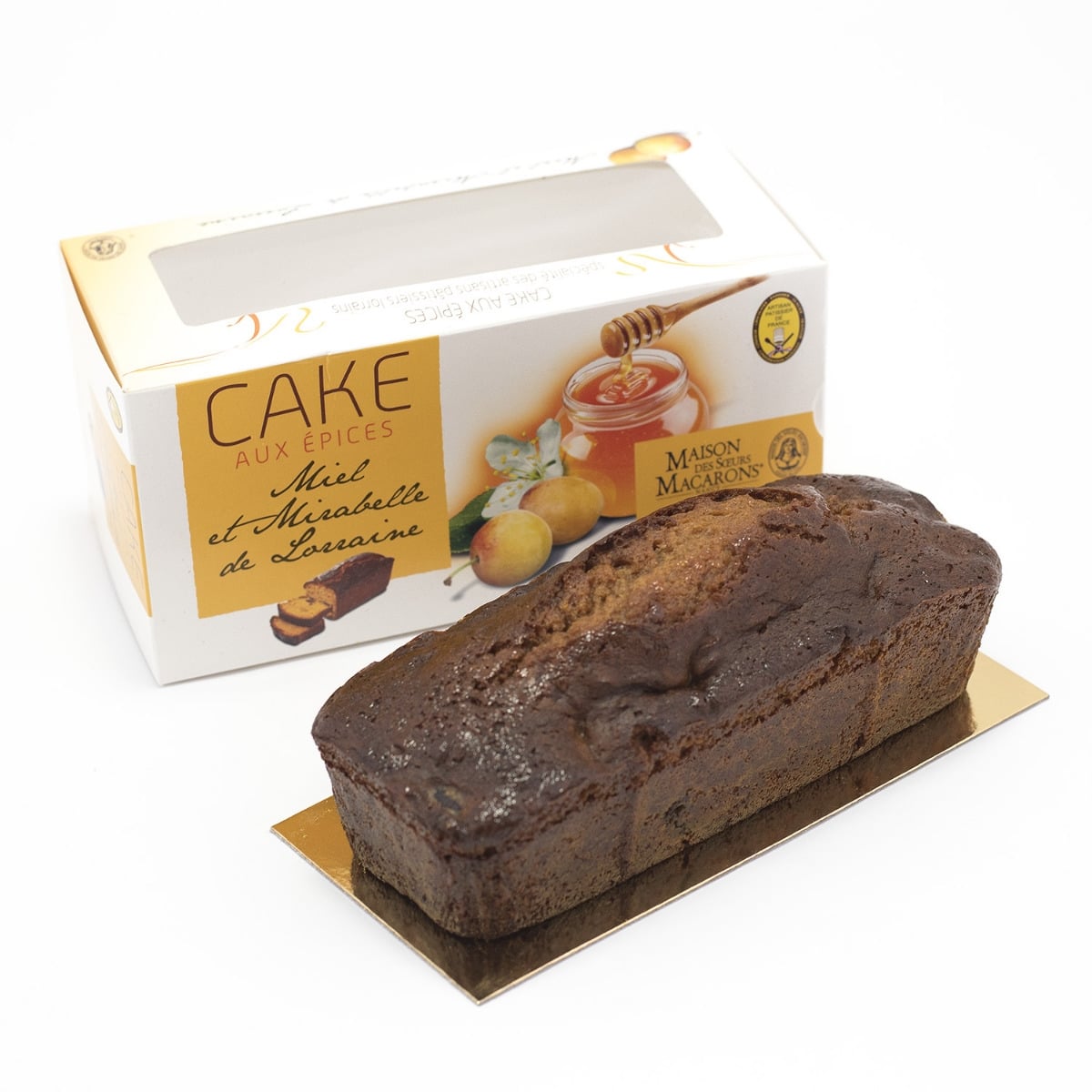
Our mirabelle cake
Let your imagination guide you to concoct new recipes such as a crumble or a Mirabelle tart for a gourmet moment. Don’t hesitate to combine our French almonds and our chocolate pastilles available in our confectionery for an even more surprising result!
Share your best recipes with us on social networks using the hashtag #MaisonDesSoeursMacarons.
Also come and discover our Mirabelle de Lorraine specialties in our confectionery: our essential specialty Maison la Perle de Lorraine with its heart of Mirabelle eau-de-vie, our fruit jellies, marshmallows and Mirabelle flavored chocolates.

